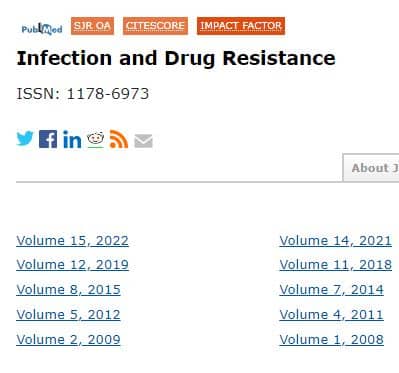
A Pilot Study of 0.4% Povidone-Iodine Nasal Spray to Eradicate SARS-CoV-2 in the Nasopharynx (2022)
Title : A Pilot Study of 0.4% Povidone-Iodine Nasal Spray to Eradicate SARS-CoV-2 in the Nasopharynx
Researcher : Sirijatuphat, R.,1 Leelarasamee, A.,1,2 Puangpet, T.,3 Thitithanyanont, A.4
Department : 1Department of Medicine, Faculty of Medicine Siriraj Hospital, Mahidol University, Bangkok, Thailand; 2Faculty of Medicine, Siam University, Bangkok, Thailand; 3Samut Sakhon Hospital, Samut Sakhon, Thailand; 4Department of Microbiology, Faculty of Science, Mahidol University, Bangkok, Thailand
Abstract : Purpose: This study aimed to evaluate the virucidal efficacy of 0.4% povidone-iodine (PVP-I) nasal spray against SARS-CoV-2 in the patients’ nasopharynx at 3 minutes and 4 hours after PVP-I exposure.
Patients and Methods: The study was an open-label, before and after design, single-arm pilot study of adult patients with RT-PCR-confirmed COVID-19 within 24 hours. All patients received three puffs of 0.4% PVP-I nasal spray in each nostril. Nasopharyngeal (NP) swabs were collected before the PVP-I spray (baseline, left NP samples), and at 3 minutes (left and right NP samples) and 4 hours post-PVP-I spray (right NP samples). All swabs were coded to blind assessors and transported to diagnostic laboratory and tested by RT-PCR and cultured to measure the viable SARS-CoV-2 within 24 hours after collection.
Results: Fourteen patients were enrolled but viable SARS-CoV-2 was cultured from 12 patients (85.7%). The median viral titer at baseline was 3.5 log TCID50/mL (IQR 2.8– 4.0 log TCID50/mL). At 3 minutes post-PVP-I spray via the left nostril, viral titers were reduced in 8 patients (66.7%). At 3 minutes post-PVP-I, the median viral titer was 3.4 log TCID50/mL (IQR 1.8– 4.4 log TCID50/mL) (P=0.162). At 4 hours post-PVP-I spray via the right nostril, 6 of 11 patients (54.5%) had either the same or minimal change in viral titers. The median viral titer 3 minutes post-PVP-I spray was 2.7 log TCID50/mL (IQR 2.0– 3.9 log TCID50/mL). Four hours post-PVP-I spray the median titer was 2.8 log TCID50/mL (IQR 2.2– 3.9 log TCID50/mL) (P=0.704). No adverse effects of 0.4% PVP-I nasal spray were detected.
Conclusion: The 0.4% PVP-I nasal spray demonstrated minimal virucidal efficacy at 3 minutes post-exposure. At 4 hours post-exposure, the viral titer was considerably unchanged from baseline in 10 cases. The 0.4% PVP-I nasal spray showed poor virucidal activity and is unlikely to reduce transmission of SARS-CoV-2 in prophylaxis use.
Keywords: povidone iodine, COVID-19, SARS-CoV-2, viral eradication, viral culture, nasopharyngeal swab
Link to Academic article: DOI https://doi.org/10.2147/IDR.S391630
Journal : Infection and Drug Resistance, 2022, 15.
Bibliography : Sirijatuphat, R., Leelarasamee, A., Puangpet, T., & Thitithanyanont, A. (2022). A Pilot Study of 0.4% Povidone-Iodine Nasal Spray to Eradicate SARS-CoV-2 in the Nasopharynx. Infection and Drug Resistance, 15, 7529–7536.
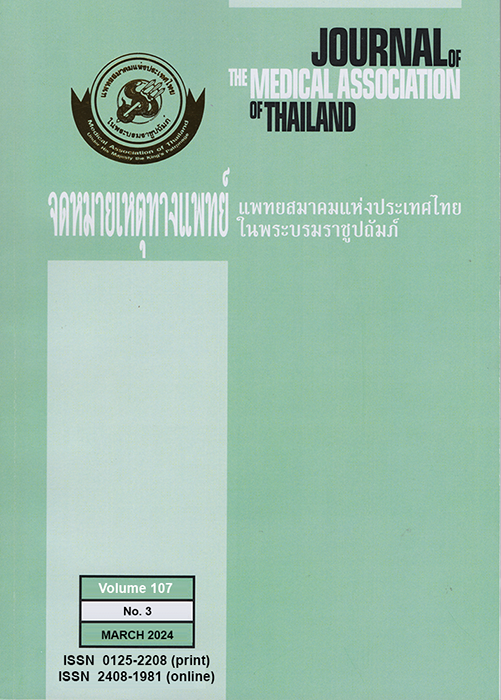
Effectiveness and Adverse Events of Generic and Original Imipenem/Cilastatin in Hospitalized Patients: The First Multicenter Non-Inferiority Study in Thailand (2023)
Title : Effectiveness and Adverse Events of Generic and Original Imipenem/Cilastatin in Hospitalized Patients: The First Multicenter Non-Inferiority Study in Thailand
Researcher : Suankratay, C., Mootsikapun, P., Jirajariyavej, S., …Plongla, R.,Leelarasamee, A.
Department : Faculty of Medicine, Siam University, Bangkok, Thailand
Abstract : Objective: Imipenem/cilastatin, a broad-spectrum antibacterial, is reserved for treatment of serious infections caused by multidrug-resistant Gram-negative bacteria. The present study was aimed to compare the effectiveness and adverse events of generic and original imipenem/cilastatin.
Materials and Methods:A retrospective, multicenter, cohort, non-inferiority study of generic imipenem/cilastatin (Sianem®), and original imipenem/cilastatin (Tienam®) was carried on between November 2017 and September 2020. The centers included Srinagarind Hospital, Taksin Hospital, Nakornping Hospital, Nakhonpathom Hospital, and King Chulalongkorn Memorial Hospital. The clinically relevant data were retrieved from the medical records on day 3, 7, and 14 after enrollment. A sample size of 260 patients per arm was needed.
Results: There were 214 and 227 medical and surgical patients enrolled in generic and original imipenem/cilastatin groups, respectively. Baseline characteristics of the two groups were not significantly different. Most patients were male and elderly. Comorbidity was observed in 86.6%. The average length of hospital stay was 17 days. At day 14 after enrollment, the favorable outcome in generic and original imipenem/cilastatin groups were 83.1% and 90.0%, respectively, with no statistical difference. The mortality rates were 3.4% and 2.0% in generic and original imipenem/ cilastatin groups, respectively, with no statistic difference. Serious adverse events were also not significantly different between the two groups at 0.9% and 0.4%.
Conclusion: The generic imipenem/cilastatin was non-inferior to the original imipenem/cilastatin in terms of effectiveness and adverse events for the treatment of serious bacterial infections in hospitalized adult patients.
Keywords: Effectiveness; Safety; Adverse events; Generic drug; Imipenem/cilastatin
Link to article: Journal of the Medical Association of Thailand, 2023, 106(8), pp. 785–790. DOI: 10.35755/jmedassocthai.2023.08.13876
Journal : Journal of the Medical Association of Thailand / in Scopus
Bibliography : Suankratay C,Mootsikapun P, Jirajariyavej S,Kawila R, Nimitvilai S, Plongla R, & Leelarasamee A. (2023). Effectiveness and adverse events of generic and original imipenem/cilastatin in Hospitalized Patients: The first multicenter non-inferiority study in Thailand. Journal of the Medical Association of Thailand, 1106(8), 785–790.
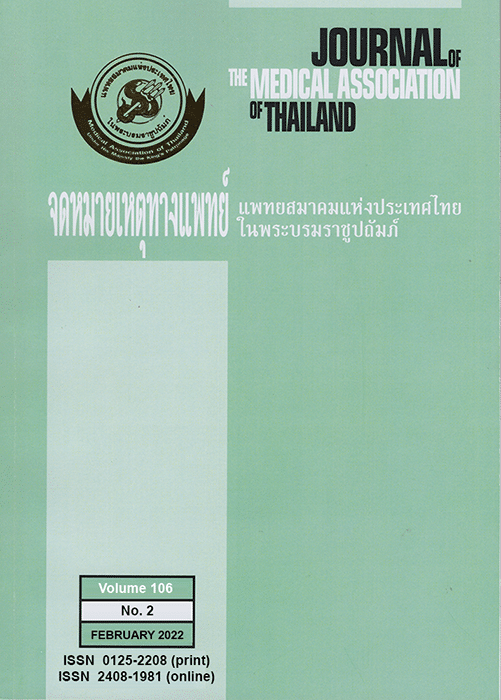
Giant cutaneous turbid bullae in a 6-year-old boy with acute fever (2019)
Title : Giant cutaneous turbid bullae in a 6-year-old boy with acute fever
Researcher : Chiawsirikajorn, Y., Leelarasamee, A.
Department :
Abstract : A 6-year-old healthy Thai boy presented with multiple vesicles and bullae varying in size on the whole body, mostly on face and trunk for five days. The first vesicle arose on scalp while he had low-grade fever and felt headache on that day. A few days later, some vesicles progressed to large bullae containing turbid fluid or yellowish pus. Oral and genital mucosa were not involved.
Keywords: Varicella Bullosa, Bullous Chickenpox
Link to Academic article: http://www.jmatonline.com/index.php/jmat/article/view/9880
Journal : Journal of the Medical Association of Thailand, 2019, 102(1)
Bibliography : Chiawsirikajorn, Y., & Leelarasamee, A. (2019). Giant cutaneous turbid bullae in a 6-year-old boy with acute fever. Journal of the Medical Association of Thailand, 102(1), 120–121.

HIV Vaccine Trials in Thailand and Path to HIV Cure (2022)
Title : HIV Vaccine Trials in Thailand and Path to HIV Cure
Researcher : Leelarasamee, A., Yoksan, S., Sutthent, R., Sirisinha, S., Siraprapasiri, T.
Department :
Abstract : Thailand has had over 30 years of experiences and development in fighting HIV/AIDS with successful results in terms of providing access to prevention, testing, antiretroviral treatment (ART) and care for over 90% of the affected patients. As a consequence, approximately 400,000 patients on ART currently have undetectable viral load, lead normal lives, and are untransmittable. However, ART must remain in place forever or else the viral load in blood will rebound. Recent advance in stem cell transplant, gene editing, and therapeutic HIV vaccine development yields hope on designing novel approach for an HIV elimination or functional cure. The National AIDS Prevention and Alleviation Committee of Thailand has set up the Subcommittee on HIV Vaccine Trials to oversee and endorse experimental vaccine regimen with sound and adequate scientific background to be tested in Thailand. So far, at least 23 small and large studies have been conducted in collaboration with the international organizations and at least 10 articles were published after the studies ended and cited over 2,726 times. One landmarked trial using notable vaccine regimen, evaluated in the RV144 trial, has shown effectiveness in reducing new infections by 31.2%. The conduction of these research in Thailand have facilitated the development of infrastructure, networking, and experience sufficiently to further support future field trial with a notable HIV cure approach. Since there are over 400,000 HIV cases with undetectable viral load in Thailand, this condition poses an excellent opportunity for testing a novel HIV cure approaches to eliminate HIV or functional HIV cure. The Subcommittee has reviewed current novel methods in this regard and strongly welcomed international organizations with similar aim, to test an innovative therapeutic HIV vaccine or a combination therapy to finally end HIV/AIDS in Thailand by the year 2030.
Keywords: HIV vaccine; HIV cure; Latent HIV reservoir; mRNA vaccine; Gene therapy; Stem cell transplantation
Link to Academic article: DOI: 10.35755/jmedassocthai.2022.11.13707
Journal : Journal of the Medical Association of Thailand, 2022, 105(11)
Bibliography : Leelarasamee, A., Yoksan, S., Sutthent, R., Sirisinha, S., & Siraprapasiri, T. (2022). HIV Vaccine Trials in Thailand and Path to HIV Cure. Journal of the Medical Association of Thailand, 105(11), 1171–1182.
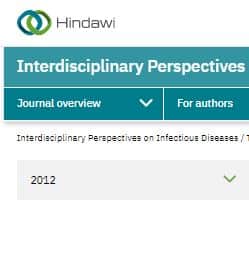
Impact of inappropriate empiric antimicrobial therapy on mortality of septic patients with bacteremia: A retrospective study(2012)
Title : Impact of inappropriate empiric antimicrobial therapy on mortality of septic patients with bacteremia: A retrospective study
Researcher : Lueangarun, S., Leelarasamee, A.
Department : [mfn]1[/mfn]Department of Medicine, Chulabhorn Hospital, Lak Si, Bangkok 10210, Thailand
[mfn]2[/mfn]Department of Medicine, Faculty of Medicine Siriraj Hospital, Mahidol University, Bangkok 10700, Thailand
Abstract : Background. Inappropriate empiric antimicrobials could be a major cause of unfavorable mortality rates in co-morbid patients. This study aimed to assess the prevalence and impact of first-dose and 24-hour inappropriate antimicrobials on mortality rates of bacteremic septic patients. Methods. A retrospective cohort study was employed. Case record forms of patients diagnosed as sepsis, severe sepsis, or septic shock with positive hemoculture during 2009 were retrieved from the medical wards, Siriraj Hospital. Demographic data, antimicrobial use, types of bacteria isolated from blood and susceptibilities, patients’ comorbidities, 28-day and overall mortality rates were collected and analyzed. Results. There were 229 cases, mean age (SD) of 63.5 (17.2) years and mean (SD) APACHE II score of 24.7 (6.8). The prevalence of first-dose and 24-hour inappropriate antimicrobials was 29.7% and 25.3%, respectively. The 28-day and overall mortality rates between first-dose inappropriate and appropriate antimicrobial were 67.6% versus 60.2% () and 75.0% versus 68.3% (), consequently. Patients with septic shock and inappropriate first-dose antimicrobials significantly had higher 28-day mortality rate (61.6% versus 41.9%; ). Conclusion. Higher mortality rates in bacteremic septic patients were substantially associated with inappropriate first-dose antimicrobials and 3-hour delayed antimicrobial administration after sepsis diagnosis.
Link to Academic article: https://www.hindawi.com/journals/ipid/2012/765205/
Journal : Interdisciplinary Perspectives on Infectious Diseases, 2012.
Bibliography : Lueangarun, S., & Leelarasamee, A. (2012). Impact of inappropriate empiric antimicrobial therapy on mortality of septic patients with bacteremia: A retrospective study. Interdisciplinary Perspectives on Infectious Diseases, 2012, 765205.
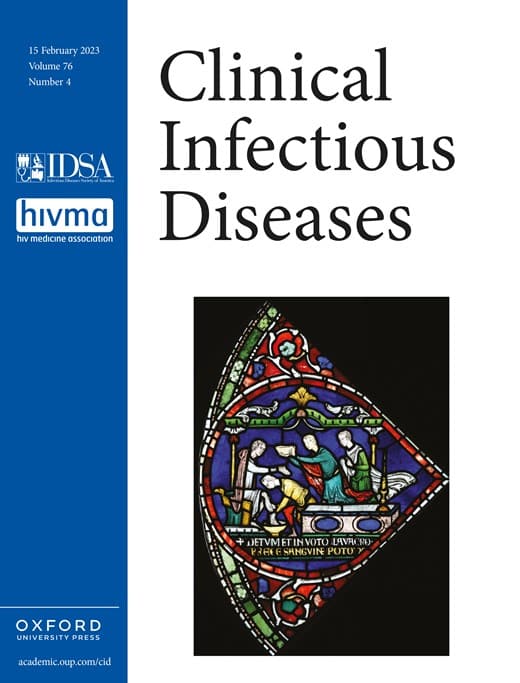
Infection prevention and control in Asia: Current evidence and future milestones (2017)
Title : Infection prevention and control in Asia: Current evidence and future milestones
Researcher : Apisarnthanarak, A., Mundy, L.M., Tantawichien, T., Leelarasamee, A.
Abstract : The Asia-Pacific region is a geographic source for emerging infectious diseases, including multidrug-resistant (MDR) organisms (MDROs) and pathogens with pandemic potential. Risks for emerging infectious diseases in this geographic region are complex and are presumed to include ecological, socioeconomic, and technological processes favorable to microbial transmission dynamics. In resource-limited settings, relative to resource-adequate settings, there continues to be a paucity of data in support of infection prevention and control, and patient safety interventions to ensure that regional, if not national, healthcare systems work effectively to improve infection prevention and control interventions. In addition, several viral pandemics and annual influenza strains have originated in the Asia-Pacific region, which, together, has global implications for population health.
Keywords: infection prevention, Asia, Asia Pacific, resource-limited setting, healthcare associated infections
Link to Academic article: https://academic.oup.com/cid/article/64/suppl_2/S49/3782667
Journal : Clinical Infectious Diseases, 2017, 64(Supplement 2).
Bibliography : Apisarnthanarak, A., Mundy, L.M., Tantawichien, T., & Leelarasamee, A. (2017). Infection prevention and control in Asia: Current evidence and future milestones. Clinical Infectious Diseases, 64(Supplement 2), S49–S50.

Need for internal medicine subspecialists in Thailand (2017)
Title : Need for internal medicine subspecialists in Thailand
Researcher : Leelarasamee, A., Intragumtornchai, T., Pannarunothai, S., …Krittayaphong, R., Bowonwatanuwong, C.
Abstract : Background: Matching supply side of the Internal Medicine (IM) subspecialists to the demand for complex medical care at referral medical centers would lead to more efficient health system management and ultimately optimal clinical outcome. The second decade of the universal health coverage policy in Thailand has raised the awareness on how to reach equitable utilization goals of good quality medical services, while barriers of accession have been removed. More accurate evidence-based human resource planning is timely needed.
Objective: To estimate the number of the ten subspecialists in internal medicine (neurologist, cardiologist, endocrinologist, gastroenterologist and hepatologist, nephrologist, hematologist, oncologist, rheumatologist, pulmonologist, and infectious disease specialist) needed for complex medical care based on the workload in the year 2013.
Material and Method: The present study applied a needs assessment model with evidence-based approach. Claimed data of inpatients in the year 2013 from the three government insurance schemes (the Civil Servant Medical Benefit, the Social Security and the Universal Health Coverage schemes), and out-patient data from Universal Coverage System were used to estimate demand for subspecialists. The Human Resource Working Group of the Royal College of Physicians of Thailand agreed on the conceptual framework to estimate the need for ten subspecialists based on clinical activities of outpatient consultations, inpatient ward rounds and non-operating room procedures on medical cases of respective diagnosis related group with severe and catastrophic comorbidities and complications by the Thai-DRG version 5. Representatives from the Associations of IM subspecialties approved the lists of ICD-10 diagnosis and ICD-9-CM procedure codes specific to each subspecialist care and proposed assumptions on rates of consultations from other specialists. Surveys were done to subspecialists in 6 major provincial clusters and representatives from IM subspecialty Associations asking time spent on main activities of patient care. The number of full-time-equivalent (FTE) subspecialists needed was calculated by multiplying the clinical workloads measured in minutes spent for each activity (ward round, ward work, inpatient and outpatient consultations) to get the total time needed, then divided by the available time for clinical activity of one subspecialist.
Results: From 5.9 million inpatient discharges in the year 2013, primary responsibility of patients in respective severe and catastrophic DRGs related to specific subspecialist workloads were summed up for teaching hospitals and regional hospitals ranging from as lowest the 2,849 cases for rheumatology to the highest 24,610 cases for gastroenterology and hepatology. The number of inpatient non-operating room procedures by ICD-9-CM as listed by IM subspecialty Associations ranged from 8 times for endocrinologists to 22,927 times for cardiologists for the whole year. Of ten subspecialists, the estimated numbers of cardiologist, nephrologist, neurologist, gastroenterologist and hepatologist, endocrinologist, oncologist, rheumatologist, hematologist, pulmonologist and infectious disease subspecialist needed at teaching and regional hospitals were 516, 241; 345, 144; 312, 143; 195, 124; 189, 45; 137, 170; 90, 47; 96, 111; 203, 87 and; 129, 44 respectively according to the workload recorded in the year 2013. The forecast FTE found the overall gap of discrepancy at 7 percent. If the distributions of these subspecialists in public and private hospitals were taken into account, the gap of discrepancy in public hospitals increased to 47 percent.
Conclusion: The demand-based forecast for the number of subspecialist needed was made possible with assumptions on conceptual framework for case selection, the rates of consultation and time-spent related to activities of patient care. The estimated numbers of subspecialists were anticipated far from optimum since the workload in the year 2013 was derived as a consequence of pre-existing suboptimal infrastructure of healthcare system. In addition, the deficit of subspecialists may increase in the near future when highly efficient, non- or mildly invasive, time-consuming procedures of acute illness increase. Sustainable matching demand and supply of human resource for health needed further validations of these assumptions.
Keywords: Internal Medicine subspecialists, Internal Medicine subspecialty, DRG database, demand-based forecast, human resource for healthcare system
Link to Academic article: http://www.jmatonline.com/index.php/jmat/article/view/7860
Journal : Journal of the Medical Association of Thailand, 2017, 100(2)
Bibliography : Leelarasamee, A., Intragumtornchai, T., Pannarunothai, S., Laohavinij, S., Patjanasoontorn, B., Suntorntham, S.,…Bowonwatanuwong, C. (2017). Need for internal medicine subspecialists in Thailand. Journal of the Medical Association of Thailand, 100(2), 239-253.

Persistent left superior vena cava with absent right superior vena cava: A case report and literature review (2019)
Title : Persistent left superior vena cava with absent right superior vena cava: A case report and literature review
Researcher : Leedumrongwattanakul, A., Ruamcharoenkiat, S., Herwutthiwong, P., Leelarasamee, A.
Department :
Abstract : A 71-year-old man presented with drowsiness three hours before admission. Stroke or hepatic encephalopathy was suspected but computed tomography (CT) scan of the brain revealed no abnormality. Cardiac auscultation discovered pansystolic murmurs at apex radiated to axilla. Plain chest roentgenogram showed markedly cardiac enlargement and electrocardiogram (ECG) revealed atrial fibrillation. Transthoracic echocardiography was performed to detect the etiology of cardiac enlargement, but it discovered a dilated coronary sinus instead. Finally, a very rare case of persistent left superior vena cava (PLSVC) with absence of right superior vena cava (RSVC) anomaly that is also known as isolated PVSVC was incidentally demonstrated by transesophageal echocardiography. The patient also had severe mitral and tricuspid regurgitations. Diabetes mellitus, dyslipidemia, and suspected cirrhosis of liver were also found. He was treated for hepatic encephalopathy, which is not related to PLSVC and he recovered uneventfully. PLSVC should be expected if any intracardiac venous procedures are going to be performed such as central venous catheterization, device implantation, or coronary artery bypass surgery.
Keywords: Persistent left superior vena cava, Congenital venous anomaly, Dilated coronary sinus, Echocardiography
Link to Academic article: http://www.jmatonline.com/index.php/jmat/article/view/10710
Journal : Journal of the Medical Association of Thailand, 2019, 102(11)
Bibliography : Leedumrongwattanakul, A., Ruamcharoenkiat, S., Herwutthiwong, P., & Leelarasamee, A. (2022). Persistent left superior vena cava with absent right superior vena cava: A case report and literature review. Journal of the Medical Association of Thailand, 102(11), 1254–1259.

Prevalence and factors associated with COVID-19 among healthcare workers at a university hospital in Thailand (2022)
Title : Prevalence and factors associated with COVID-19 among healthcare workers at a university hospital in Thailand
Researcher : Sirijatuphat, R., Leelarasamee, A., Horthongkham, N.
Abstract : Globally, healthcare workers (HCWs) have a high risk of SARS-CoV-2 infection, but less is known about healthcare workers in Thailand. We estimated the prevalence and risk factors for COVID-19 among HCWs in Bangkok, Thailand. A retrospective cohort study was conducted at a large tertiary care academic hospital in Thailand from May 2020 to May 2021. HCWs that presented with fever and/or acute respiratory tract symptoms who tested with RT-PCR were identified, and their clinical data were collected. There were 1432 HCWs with fever and/or acute respiratory tract symptoms during May 2020 and May 2021. A total of 167 patients were front-line HCWs and 1265 were non-front-line HCWs. Sixty HCWs (4.2%) developed COVID-19; 2 were front-line and 58 were non-front-line HCWs. The prevalence of COVID-19 in front-line HCWs was 1.7% (2/167), and 4.6% (58/1265) in non-front-line HCWs (P = .04). In addition, non-front-line HCWs, non-medical staffs, history of contact with a confirmed COVID-19 case at home/family, unvaccinated status, fair compliance to personal protective equipment (PPE) standard, and initial presentation with pneumonia were significantly more common in HCWs with COVID-19 than those without COVID-19 (P < .05). Front-line HCWs, history of contact with a confirmed COVID-19 case at the clinical care areas in the hospital, vaccinated status, good compliance to PPE standards, and initial presentation with upper respiratory infection were significantly more common in HCWs without COVID-19 than those with COVID-19 (P < .05). Multivariate analysis revealed history of exposure with confirmed COVID-19 case at home or in family, unvaccinated status, non-frontline-HCWs, non-medical staffs, and fair compliance to PPE standard to be independent factors associated with COVID-19 in HCWs. COVID-19 was more common in non-front-line HCWs at this tertiary hospital. Thai guidelines on infection prevention and control for COVID-19 seem to be effective in preventing SARS-CoV-2 transmission. Therefore, the adherence to these recommendations should be encouraged.
Keywords: COVID-19, healthcare workers, prevalence, risk factors, SARS-CoV-2, Thailand
Link to Academic article: https://www.ncbi.nlm.nih.gov/pmc/articles/PMC9508950/
Journal : Medicine (United States), 2022, 101(38)
Bibliography : Sirijatuphat, R., Leelarasamee, A., Horthongkham, N. (2022). Prevalence and factors associated with COVID-19 among healthcare workers at a university hospital in Thailand. Medicine (United States), 101(38), pp. E30837.

The efficacy and safety of andrographis paniculata extract for the treatment of acute nonspecific upper respiratory tract infections: A randomized double blind placebo controlled trial (2021)
Title : The efficacy and safety of andrographis paniculata extract for the treatment of acute nonspecific upper respiratory tract infections: A randomized double blind placebo controlled trial
Researcher : Leelarasamee, A., Suankratay C , Hunnangkul S , Udompunturak S , Krittayaphong R , Poonsrisawat J , Wongsakorn N , Ittipanitphong C , Sirimai S , Prakairoongthong P , Rattanamaneekorn S , Chaicharoenpong K
Department :
Abstract : Background: The efficacy and safety of Andrographis paniculata (Burn.f.) Wall. ex Nees in the treatment of acute nonspecific upper respiratory tract infection (NS-URI) are still less clear due to the diversity of herbal preparations, dosages, and few large clinical trials. The authors aimed to investigate the therapeutic efficacy and safety of the crude extract from A. paniculata in acute NS-URI.
Materials and Methods: Patients aged 18 to 60 years old from government hospitals, with acute NS-URI were enrolled between January 2018 and August 2019. Drug allocation was randomized in block of six. The crude extract of A. paniculata was packed in capsules containing 20 mg of andrographolide andgiven thrice daily for four days. The placebo capsules were physically identical. Ten tablets of paracetamol were also given as symptom-rescue drug. They were followed at days 4 to 7, and 14 to 30.
Results: Eight hundred sixty-two patients were enrolled between January 2018 and August 2019. Thirty-three patients withdrew from the study, therefore, 829 patients remained in the final analysis. Four hundred nineteen cases (50.5%) received the crude extract, and 410 cases (49.5%) received the placebo. The demographic data, clinical manifestation, and laboratory findings at the enrollment were similar in both groups. At the first follow-up, the rates of severity of each and combined symptoms decreased similarly, and almost all patients felt much better or recovered on day 7. Paracetamol was used by 205 (48.9%) and 185 (45.1%) patients in the experimental and control groups, respectively, and about three tablets taken in each group. Patient satisfaction rates were also similar in both groups. Adverse effects were mild and self-limited in 18 (4.3%) and 9 (2.2%) patients in the experimental and control groups, respectively.
Conclusion: The therapeutic efficacy of the crude extract or active ingredient from A. paniculata for acute NS-URI was not confirmed. Both groups showed similarly mild and few adverse drug reactions.Trial registration: The present study protocol was registered at the Thai Clinical Trials Registry (TCTR 20170329002; date: March 26, 2017).
Keywords: Andrographis paniculata; Andrographolide; Acute nonspecific upper respiratory tract infections; Common cold; Pharyngitis; URI
Link to Academic article: doi.org/10.35755/jmedassocthai.2021.07.13037
Journal : Journal of the Medical Association of Thailandthis, 2021, 104(7)
Bibliography : Leelarasamee, A., Suankratay, C., Hunnangkul, S., Udompunturak, S., Krittayaphong, R., Poonsrisawat, J.,…Chaicharoenpong, K. (2021). The efficacy and safety of andrographis paniculata extract for the treatment of acute nonspecific upper respiratory tract infections: A randomized double blind placebo controlled trial. Journal of the Medical Association of Thailandthis, 104(7), 1204–1213.